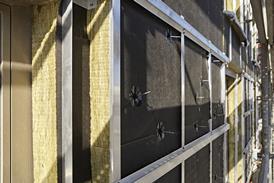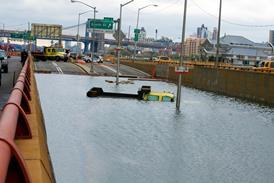It would have been a brave move for any company to take a chance on security during the millennium festivities. For weeks, and indeed months, UK businesses had been warned repeatedly not only about threats posed by the Y2K date change, nicknamed the millennium bug, but also to reinforce security procedures to ensure problems did not occur simply because staff were diverted by the celebratory mood that gripped the country.
Indeed the security industry had been preparing their customers, as well as taking precautions themselves, for months beforehand to ensure that everything went smoothly. Most security managers were on duty during the entire bank holiday period, guarding companies had been recruiting and training staff to provide extra cover, alarm systems had been checked and re-checked, and contingency plans had been put in place to cope with crowd control and public disorder problems which were expected in Central London.
But inevitably things did go pear-shaped for some during the festive period. To name just a few of the incidents, the King George VI race at Kempton Park racecourse in Sandown was marred by a hoax bomb threat on 27 December leading to the racecourse being evacuated; security procedures at the Dome on New Year’s eve were severely disrupted through administrative and procedural errors; and a painting by Paul Cézanne, valued at £3 million was stolen from the University of Oxford’s Ashmolean Museum on New Year’s day.
First night
Although no one was hurt or injured, and there were no specific breaches of security reported, the opening night at the Dome, which had been billed as the party of a lifetime, turned out to be a disappointment for many. It was a public relations nightmare for the New Millennium Experience Company (NMEC) with guests having to queue for hours before getting security cleared to join the Royal party. Problems were highlighted a week before the event when Live Productions, which had been drafted in to stage the event, were removed from handling tickets. Staff employed by the NMEC tried to pick up the pieces but were not in time to post tickets and security passes to 3,000 guests.
On the 31st night, 10,500 guests had to be security screened before being allowed in to the Dome. Several thousand guests arrived earlier than expected in order to pick up their tickets from Stratford station and get security screened. Due to the crowds, Stratford station was closed by British Transport Police for safety reasons. Adding insult to injury, only five of the 10 security arches provided by the Metropolitan Police Service had been effectively installed to screen guests, thus slowing down the procedure and leading to long queues and frustrated partygoers.
A spokesperson for the Metropolitan Police Service told SMT that after it was realised it would take an unacceptable time to screen everyone, contingency plans were put in to bus people to the Dome where they were to be security cleared. Nevertheless, with only five security arches installed, it was physically impossible to process more than 625 people every 15 minutes. In a joint statement issued by the NMEC and the Metropolitan Police, both parties appeared to acknowledge that it was the NMEC’s responsibility to ensure adequate floor standing for the security arches. The statement adds: “[The arches] require a firm foundation and five arches were relocated to hard standing earlier in the day. Because of the limited hard standing available, it was not possible to relocate all the security arches.”
The spokesperson would not comment about specific reasons for delays in installing the security arches, or about procedures relating to testing the systems prior to the event, and would not attribute blame. Brian Roberts, manager responsible for security at the NMEC was unavailable for comment as SMT went to press. However a joint statement issued by the MPS and NMEC said: “The NMEC and MPS have worked closely together on security and policing at the Dome and will continue to do so in the future. We do not want to attribute blame. At the end of any major public event, there are always lessons to be learned. However, it must be stated that the Commissioner and the Home Secretary have praised the Met for the celebrations.”
Artful dodger
Meanwhile at the Ashmolean Museum in Oxford, celebrations in the street and the noise of fireworks provided the cover for thieves who stole a £3 million painting by Paul Cézanne in the early hours of New Year’s day. Thames Valley Police, who are handling the investigation into the theft, said police had received notification that alarms had been triggered at the museum. A police spokesperson said: “The thief or thieves entered the building via scaffolding and a skylight, were in the gallery for a matter of minutes, stole the painting and left the way they had got in. We believe it was a professional job, and one of our strongest lines of inquiry is that the painting was stolen to order, as it would appear they had made excellent arrangements on how to steal the picture.”
The 18” x 21” landscaped oil on canvas painting - Auvers-sur-Oise - was painted between 1879 - 1882 depicting a village where the artist had lived. It had been donated to the Ashmolean and was on display in the Museum’s Hindley Smith Gallery with several other 19th century paintings. It was also not insured against theft.
The Ashmolean had received the highest national indemnity rating from the Museums and Galleries Commission’s security adviser. A spokesperson for the Ashmolean said its normal level of security was in place at the time of the theft, and the alarm systems had operated properly with no evidence of problems relating to the Millennium bug.
The painting has now been listed as a stolen item at the Art Loss Register where it will remain until it is found. James Emson, managing director, said: “The thieves were obviously professional. There may well have been more than one thief involved. They chose a night when the police were actively involved elsewhere.” It is not the first time that has happened. A few years ago, the artist Munch’s ‘The Scream’ was stolen from the National Gallery in Oslo on the opening night of the Winter Olympics in Lillehammer, Norway.
Alarms no barrier
“However secure you make a place, if the thief or thieves are determined, they will get in. You cannot make a place 100% secure,” adds Emson. There are plenty of other examples where great paintings have been stolen very quickly. For example, two Turner paintings worth £22 million, which were on loan from the Tate to the Frankfurt Museum were stolen in about eight minutes in 1994. The thieves seized the guard, pinched the paintings and were gone. A few years ago, a painting by Titian was also stolen from Longleat House even though the alarm system was working normally.
According to Emson, the likelihood of recovering the picture are high although it may then become subject to a title dispute. More immediately however, the Ashmolean is seeking more advice from the Museums and Galleries Commission. Neither the Ashmolean or Thames Valley police would speculate about the alarms system while the investigation is still underway.
However, disruption due to the millennium bug seems unlikely since police did receive notification that the alarm had been set off.
The BSIA told SMT that none of its members had reported any problems or significant breakdowns in communication during the millennium period and there was no evidence of the date change affecting the working of other alarms systems. Action 2000, which had been widely predicting that telephone exchange faults would occur, resulting in “no dial tone” conditions, said it was too early to address the impact of the Y2K date change. However, it stated that it had not received any indication of problems being experienced by security companies and failure in relaying calls from security alarms due to the date change, so far.
Race against time
Terrorist activity was also expected to disrupt festivities and Kempton Park racecourse in Sandown had an early taste of millennium chaos during the staging of the King George VI steeple chase race, sponsored by recruitment agency, Pertemps, on 27 December. 20,000 race-goers had to be evacuated after a threat was received by BBC Belfast from a group claiming to be the Continuity IRA saying a bomb was primed to explode at 5pm. Although the race was run, police advised United Racecourses who made the decision to evacuate the racecourse and cancel the rest of the day’s race card programme.
Sue Ellen, managing director of United Racecourses, told SMT that the management took appropriate action according to advice received from the police. She said independent experts had not been called in because there was no time. However, the racecourse does employ its own security team. Ellen said: “We received notification at around 2pm from police that BBC Belfast had taken a phone call from a caller claiming a bomb would go off at 5pm. Police initiated a search of the area. We then discussed with police what we should do. After consideration we decided to evacuate the racecourse and abandon the rest of the day’s racing. We started evacuating people at about 2.30pm and everybody was off the site before 5pm.”
Simon Trundle, from Grendon Design Agency Ltd, an Association of Security Consultants (ASC) registered member, whose company carries out terrorist threat assessments and risk assessments, said officials took a risk if the threat had been specific about a car bomb. He said: “You could argue that by allowing visitors to take their cars, you know who’s claiming a car - but there is a risk involved. If the warning specifically said ‘there is a vehicle bomb primed to explode’, that increases the risk of taking the decision to evacuate the car park. But it was less of a risk to get people out with such a long warning.”
Dr John Wyatt, a consultant at Search Training International Ltd, said: “If the call is either real or a hoax, mention of a time is irrelevant. If there is no codeword, it is the employer’s responsibility to take action.”
The Metropolitan police issued a statement saying: “Police initiated a search of the area, and gave advice to the racecourse management. The racecourse management decided to evacuate the racecourse and this was done with police assistance. Following the search, the incident was stood down at approximately 18.19 on the same day and no trace was found of a suspect package.”
However, Trundle warned that each incident will be different and said United Racecourses and other organisations will have to look at their crisis plans. “Organisations must not assume that the decision made at Kempton Park was the obvious one. Each organisation must go through their own response plan and decision-making process. Although police and management did minimise the inconvenience to the public, there is no room for complacency. Typically groups give several warnings and then put in a device.”
Source
SMT




















